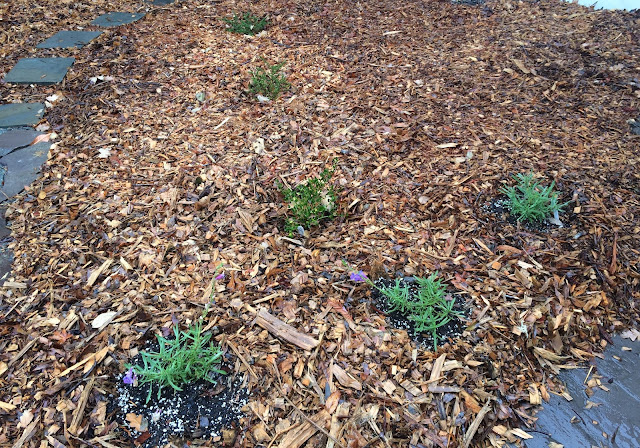 |
| Strong Heart created by Roxanne Swentzell |
In these times, Roxanne Swentzell’ s message is "to be strong
by staying close to the earth.
Doing things close to our Mother Earth
like touching Her,
walking more in nature,
growing gardens,
and doing things that help us listen
to Her better
will help give us strength and guide
us to do what's right.
She helps us have a good heart
by slowing us down and
reminding us what is important."
As I have mentioned in an early post the entire yard has been sheet mulched. I have been to the Milo Baker (our local chapter) California Native Plant sale to purchase native plants. Although it is not my favorite place to buy natives, I have also been to California Flora Nursery in Fulton. My favorite place use to be Mostly Natives Nursery in Tomales where the climate was close to the climate of MuRefuge. The owners retired and the nursery was bought and moved to Pt. Reyes Station where the inventory is markedly smaller. However, they do have a desired shrub, Creek Dogwood (Cornus sericea ssp Occidentalis), which I plan to purchase the next time we visit Shasta's Auntie T. The red stems in the Winter are so lovely as they brighten the gloominess of the often grey skies.
Last week in spite of the severe drought I did plant a few natives in the rock hard soil.
 |
to the left of our front door.
Our British friends living close by voiced surprise that I was planting in the drought, but I am wanting to get on with beautifying our sheet mulched yard.
Rain has now finally arrived here in Cotati. So far we have gotten 2.38" of rain. The quote below is a really good summation of the almost week long rain event which began a couple of days ago. This event is predicted to go through the beginning of next week.
"After nearly a year without rain, a series of potent Pacific storms is directed at Northern California this week, potentially bringing as much as a foot of rainfall and up to three feet of snow in the Sierra Nevada.
Supercharged by a classic atmospheric river pattern, the storms could lead to flash floods and dangerous debris flows in a wide swath of the region already devastated by recent wildfires.
With each successive storm, the moisture potential increases, peaking with possibly a rare category 5 atmospheric river event on Sunday.
"An atmospheric river marked as a category 4 or a 5 is capable of producing remarkable rainfall totals over three or more days, likely to exceed 10-15% of a typical year's precipitation in some locations," said Marty Ralph, director of the Center for Western Weather and Water Extremes at UC San Diego.
Atmospheric rivers are a narrow band of concentrated moisture in the atmosphere, cruising more than two miles above the ocean; they can transport as vapor, more than 20 times the water that the Mississippi River does, as a liquid.
By the time Monday morning arrives, the parade of storms could drop as much as 8 to 12 inches of rainfall in parts of Northern California and add another 1 to 3 feet of snow to the high Sierra. For an area plagued by drought, a foot of rain is too much, too fast and too soon and will likely lead to run off, flash floods and debris flow in burn scar areas." Pedram Javaheri, CNN
So now I have on my calendar the completion of settling the purchased native plants into their permanent homes in the ground here at PageRefuge. I use biodynamic gardening principles in which planting days are chosen to enhance certain parts of the plants. The perennials, shrubs and trees are all flowering flora, so my intention is to plant on "Flower" Northern Hemisphere transplanting days: October 26 and 27. I am hopeful with the rains softening the hardpan soil that I will be able to accomplish this task within these two days.
This joyful, to me, activity of planting a mostly native habitat does indeed connect me with Mother Earth. And I am optimistic that all who walk by will enjoy the beauty of the natives as they flourish.
May we all




No comments:
Post a Comment